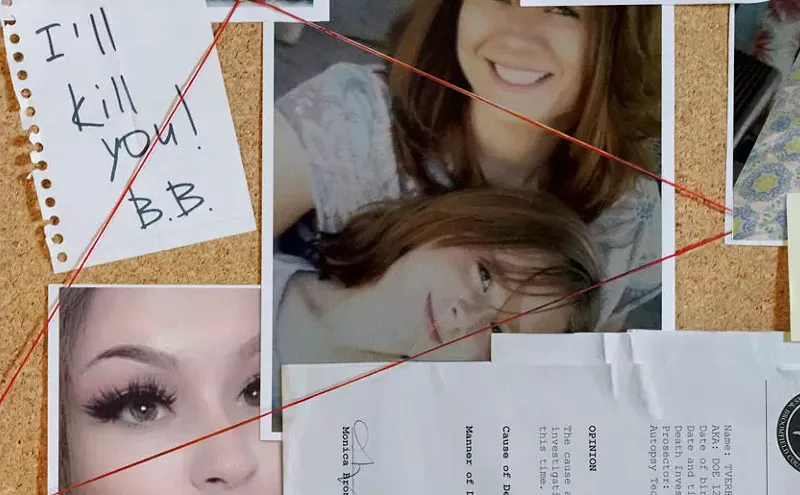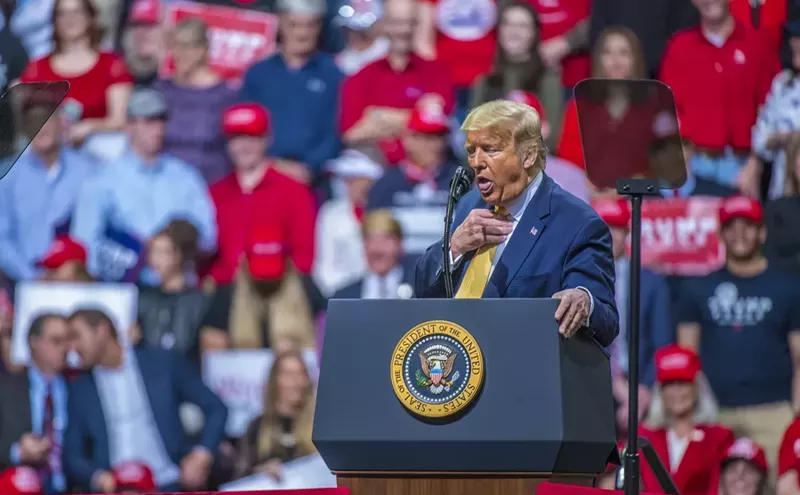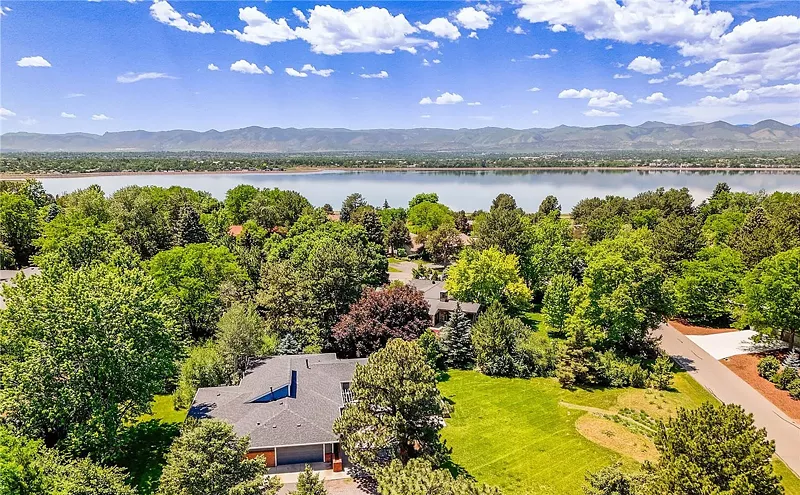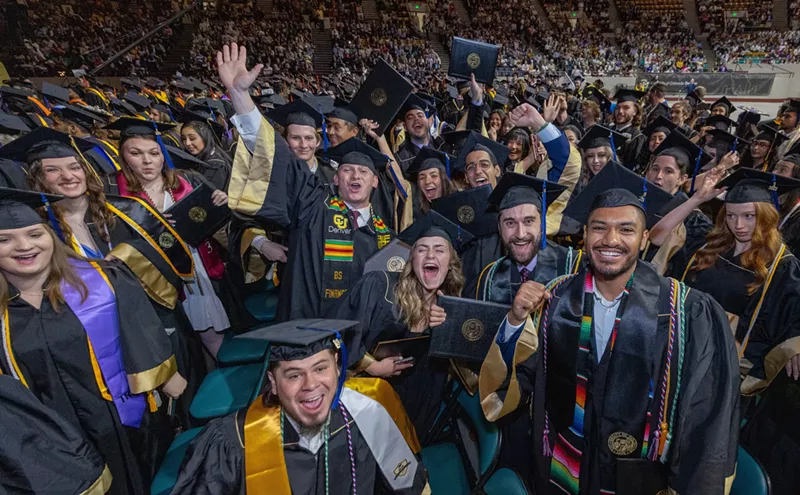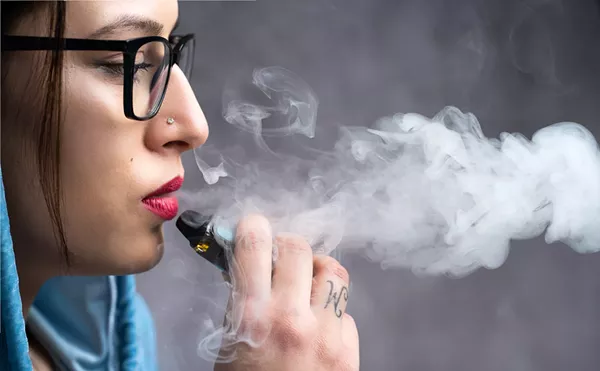The battle began by chance, at the 2002 Burning Man festival, when a twenty-something man costumed as Jesus crossed paths with a stranger in a Satan suit near the ice-vending tent in Center Camp.
Jesus struck the one-legged "leaping crane" pose made famous in The Karate Kid, then channeled Bruce Lee, unleashing a high-pitched, howling "Keee-yai!"
Seconds later, Christ and the Antichrist exchanged mock blows, kicks, martial-arts-flick sound effects and taunts in the midst of a rapidly encircling crowd.
"Come on, Jesus, admit it," Satan shouted. "You fornicated with that whore, Mary Magdalene, didn't you?"
"That was 2,000 years ago, Lucifer. Will you just give it a goddamned rest?"
Satan looked shocked at such language coming from the Son of God.
"Nice," cried the horned one, twisting into a spinning back kick. "Really fucking spiritual, Jesus."
The biblical combatants were but two of nearly 30,000 souls who traveled deep into the Black Rock Desert of northern Nevada to participate in this year's Burning Man, the festival's thirteenth incarnation and the biggest yet. Subjective in the extreme, the Burning Man experience is tricky to translate into words. It is a huge, countercultural costume ball, a psychedelic playground and a grand experiment in a temporary community with a functional barter economy. It is a test of endurance in a harsh environment and an incomparable showcase of large-scale, mind-bending installation art.
"Explain Burning Man to someone who's never been? Ha! Good luck," says 33-year-old Dave Colberg, a Denver resident who is known at the festival as Amadeus Tonguefingers. "Basically, you build the most remarkable, eccentric, erotic, artistic and inventive city you could ever imagine, and you build it in a week, in a very demanding environment...and then you tear it down and burn it."
Colberg works for a local fabric-restoration company, repairing furniture and clothing damaged by fire. "Oh, the irony," he says -- because among, and perhaps above, everything else, Burning Man is an elaborate occasion to indulge one's inner pyromaniac.
"My first year at Burning Man, we recklessly set fire to our camp offal and created an explosion," says Julie Chase, aka "Uberblonde," 29, who completed her master's thesis on Burning Man at the University of Colorado in May. "We were uninformed and irresponsible, and after decades of good suburban breeding, it was exactly what I needed. I experienced a new kind of collective power in the act of blowing shit up."
Held the week before Labor Day on the perfectly flat, lifeless, cracked-earth hardpan of a dry, prehistoric lake bed roughly 120 miles northeast of Reno, Burning Man's ephemeral city traditionally draws most of its populace from the San Francisco Bay area, which is the nearest major urban center, eight hours away by car. That held true this year as well, although an informal survey of license plates and "So where are you from?" queries at the festival showed that Colorado is running a clear, if distant, second in the home-state category.
"It's quite remarkable how much the regional Colorado Burning Man culture has grown in the last three years," says Chase. "When I first went to Burning Man four years ago, there were very few large-scale theme camps or 'art cars' out of Denver. This year, they were everywhere."
Burning Man's layout has evolved into a massive, 260-degree arc of encampments organized along a grid of streets collectively known as Black Rock City. The city's main promenade leads outward from Center Camp to the festival's namesake, a three-story wooden effigy packed with explosives. Beyond this gigantic matchstick man lies "the playa," the open-desert landscape that Burning Man's installation artists employ as their blank canvas.
A sign planted by some merry prankster way beyond Black Rock City's developed limits reads: "Coming soon, Playa Meadows! Ranch style homes in the mid-300s."
Theme camps and villages make up the hundreds of distinct neighborhoods within Black Rock City. The 2002 lineup included the Hee Bee Gee Bee Healers, a tribe of Burners from Boulder who, in their third year at Burning Man, erected a highly decorative and functional "healing tent." Offered within were free massages, body painting, Tarot readings, reiki energy work and nutrient-loaded "smart drinks."
As in years past, however, by far the most impressive Denver-driven theme village was Disturbia, population about 150, founded in 1998 by Lizard Man, a Boulder space scientist who analyzes particles from other planets for NASA (really), and Teiwaz, a San Francisco dot-commer (now ex-dot-commer). The two met in 1997, when they both attended Burning Man for the first time.
"I was living in Salt Lake City that summer, and I met this guy through the ride board on the Burning Man Web site who said he was driving through from Boulder, so he could pick me up," says Teiwaz, 29. "We hit it off and turned out to be great friends, and as we were leaving the festival that year, we were looking at all the theme villages, and we more or less just said to one another, 'We can do this.'"
They did, and in the years since, Disturbia has grown into a village of fifteen theme camps from Denver and the Bay area, as well as New York City and Las Vegas. Burning Man 2002 organizers awarded Disturbia a prime piece of real estate on the Black Rock City Esplanade, the outermost ring of the festival, which is reserved for theme villages demonstrating only the highest levels of creativity and energy.
Colberg (Amadeus Tonguefingers) joined the Disturbia village three years ago. He describes the 2002 setup:
"Starting on one side of our block [at the entrance to Disturbia], we had the Alien Autopsy tunnel, which was a hundred-foot-long tunnel made of PVC tubing and tarps, consisting of long rope lighting and black lights with fluorescent aliens, spaceships, ghosts, weird toys, plastic glowing lizards and spiders, tribal carvings and glow sticks hanging and lighting all the way to the far end, which had about fifteen feet of spiraling red chili-pepper lights.
"Next was the ImageNode camp. These guys came from New York. They had three connected projection domes filled with audio/video art, one of which was linked to a camera outside so that people could interact and be a part of the projections happening on the dome's cover.
"Antarctica was there once again. It's a freezer truck decorated inside with icicles and such, with a DJ spinning dance tunes and videos of ocean life. It's a great place to dance your butt off when it's a hundred degrees outside.
"Then there were a couple of chill space domes, brought largely from Disturbia's Denver contingent," he continues. "After these came the art-car parking lot, which held the Sextopus, a huge octopus car with operational tentacles that light up with flashing rope lights. The Sextopus was also built by two guys from Denver, Smark and Pete. Another of our art cars was the Sea Snail, which was basically a two-story Goliath slug with a bar on the back and an organ on the second level.
"Alongside the art-car refuge was Dr. DNA's Six Phases of Heaven, which I would describe as dealing with exploring and expanding your sexual boundaries and levels of inhibition. Dr. DNA's from Vegas, and he's very twisted.
"Finally, the last camp in the realm of Disturbia was Klown Town, which is pretty self-descriptive. It was headed up by Ouchy the Clown, a sadomasochistic nightmare in bright, beautiful face paint. My advice to everyone who visited our village was 'Do NOT stick your hands in the Grope-A-Clown box!'"



